The Mating Game
PAWN STARS Stunning British Women’s Chess Champion writes steamy 50 Shades of Grey-style romance novel about the nerdy game. Jovanka Houska has co-authored a book titled ‘The Mating Game’ where she talks about the issues of sex, chess and the struggle to become a Grandmaster BY JAKE LAMBOURNE 3rd January 2017,
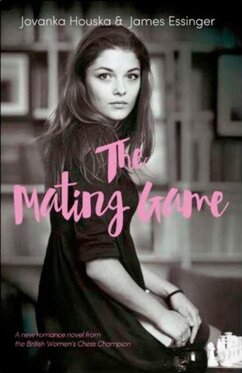
Titled ‘The Mating Game,’ the book takes on a ’50 Shades of Grey’ style as she writes all about steamy situations in the world of chess.
We follow the life of 26-year-old protagonist Vanny as she begins her quest of fulfilling her dream of becoming a Grandmaster, and the ups and downs of her love-life along the way.
The book is co-authored with James Essinger, and he said of novel. “I had the idea of a beautiful and passionate heroine who had the basic problem that she was only attracted to guys who could beat her at chess. And so Vanny was born.”
Houska has also spoken of how the book is being greeted in the chess community as she lifts the lid of what really goes on behind tournaments.
She said: “I think that international tournaments are not that dissimilar to The Mating Game!
“So far, I’ve had a lot of funny comments from people I’ve not really expected them from – they’ve all been really supportive. “I hope that people will realise that it is not just about sex, or chess, but a powerful, romantic story too.” She has however advised any parents not to let any budding chess youngsters get their hands on it, she said: “I would definitely not recommend that any children read this book, though!”
Houska has also came out and lambasted Anastasia from 50 Shades of Grey claiming she is too submissive, and that her own character Vanny is more independent and would not stand to be controlled by anyone.
The 36-year-old has also revealed which chapter readers should jump to if there interested in raunchy action.
She said: “Chapter 19 is pretty raunchy! Vanny goes to visit Tom and it’s pretty racy stuff!”
So what was the reason why she took the plunge in writing an erotic novel? Well it all started when she met Essinger around 2005 and they both had plans to get chess into the mainstream.
Talks of a quiz show fizzled out with TV companies, then a non-fiction book based on the chemistry of players was turned down, before they decided to start to write a novel in 2009 together, sending each other daily emails on ideas and plot lines. What is Houska’s ultimate dream? That Scarlett Johansson plays the role of Vanny if the book is ever turned into a film. You can download the first ten chapters of ‘The Mating Game’ on Amazon as a taster to see whether you enjoy it – the novel is available to buy in a Paperback or Kindle edition.
Source: https://www.thesun.co.uk
Little Known Feminist Icon

Susan Polgar: Little Known Feminist Icon
By ALICIA COLON | July 7, 2006
The woman I met two years ago at the Congress of Racial Equality’s annual Martin Luther King gala certainly deserves to be a feminist icon. Yet when I checked the Web site of the National Organization for Women for anything on Susan Polgar, I found nothing. Instead, the Web site promptly spit back, “Do you mean Susan Pleasure?” Surely a woman who had broken the gender barrier time and time again and had developed a foundation for young girls that would improve their self-esteem and assuredness deserved some notice by this women’s group. Alas, Ms. Polgar’s achievements are in the male dominated world of chess — that great game of cerebral excellence and strategy — not politically correct issues.
On June 25 the city hosted the highest-rated round robin chess competition in America’s history — the Mayor’s Cup. In spite of Ms. Polgar’s stellar record of four World Women’s Championships, five Olympic gold medals, and Grandmaster status, the Hungarian-American mother from Queens went into this event under low expectations.
I asked her about the difficulty of the event. She said, “Before the event, I was unsure of my performance because it is incredibly hard to combine being the organizer of the event, a devoted chess mom, and being one of the players at the same time. This is a very big handicap. In addition, there was a lot of pressure being the only woman in the highest rated ever chess tournament in U.S. history. If I do well, it is a big boost for women’s chess in America. However, there are many critics who were just waiting for me to fail so they can say that a woman has no business competing against top-level male players.”
What little I know about the world of chess has been derived from headlines about the eccentricity of Bobby Fischer and feature films of other child prodigies. Historically, chess champions are also predominantly male Europeans. I also know that Ms. Polgar competed in other events playing simultaneous opponents and scored a spectacular win record (see www.susanpolgar.com). How did she do, I asked? She told me, “I was the lowest rated player in this tournament. Many people said the odds of me winning this tournament is like the odds of winning the lottery. Many believed that I would finish in last place by a significant margin. I gave it my best shot and I was one half point away from winning the strongest tournament in U.S. history.”
Ms. Polgar competed against Grandmaster Ildar Ibragimov and the reigning U.S.Champion Grandmaster Alexander Onischuk for the first time. She beat them both. Gata Kamsky, now ranked no. 1 U.S. male, won the competition.
Raise your hand if you’ve never heard of Ms. Polgar but have heard of Annika Sorenstam’s failed attempt to qualify for the PGA tournament. Yet Ms. Polgar’s demolishment of gender barriers in the last 25 years has actually reduced the chauvinism in chess competition.
Speaking of her battles, she said, “One of the most painful experiences was in 1986. I was the first woman in history to qualify for the ‘Men’s’ World Chess Championship but I wasn’t allowed to compete. The official reason was I am a woman and no woman is allowed. Luckily by the end of that same year, because of my case, the International Chess Federation changed the rule by deleting the word ‘Men’s’ from the name of the event. Since then women, if they qualify, can compete for the overall world title. I have stood up for the rights of women chess players around the world in the past three decades and I will not give up until we have the same rights and conditions as our male counterparts.”
Ms. Polgar started playing when she was just 4 years old and soon won the championship of Budapest in her native Hungary with a perfect score (10–0). She was a hyperactive child who discovered that chess enabled her to focus for hours. Why not chess instead of Ritalin, I asked? Susan agreed that chess is certainly more fun than medication and added, “I strongly believe that chess can help all children educationally and chess will give them many incredible benefits throughout their lives. This is even more important for girls as it can help enhance their self-confidence and self-esteem.”
The women I truly admire are those who face enormous wrath for telling the truth, as Phyllis Chesler did when she spoke of the feminist hypocrisy ignoring the plight of battered Islamic women; and women like Susan Polgar who break down gender barriers without demanding that they be altered or lowered.
Source: http://www.nysun.com
World Chess Championship to be held in New York City

After months of delay and much scepticism in some quarters that it would ever happen, the company that holds the marketing rights to the world chess championship will announce on Tuesday that the next title match – between the Norwegian world champion Magnus Carlsen and the Russian challenger Sergey Karjakin – will take place in New York in November.
The 12-game match will start on 11 November and be played over a three-week period at the newly refurbished Fulton Market building in central New York. “We are thrilled to hold the championship in such a fantastic venue,” said Ilya Merenzon, the chief executive of Agon, which holds the commercial rights to the world championship. “The location befits the status of chess as one of the world’s fastest growing sports both in terms of participation and commercial appeal.”
Who those sponsors will be is the next critical question. The failure to attract big-name commercial backers has dogged chess for decades, and made the sport financially dependent on oligarchs in Russia and other parts of the former Soviet Union, including emerging states such as Azerbaijan which have seen support for chess as a source of national prestige. This has led to criticism of cronyism of the World Chess Federation, and accusations that its accounting procedures are at best opaque.
The New York match will cost an estimated $6m (£4.6m) to stage, with the two players competing for a prize of more than €1m (£850,000). The winner of the match takes 60% of the prize fund, while the loser gets 40%.
A source close to Agon said an announcement on sponsorship would be made by the end of the month, but that two seven-figure sponsors were already on board. Getting big-name backers to commit in the long term will be crucial in putting chess on a par with other sports.
The Silence of the Pawns
A Guest Article by Paul Truong
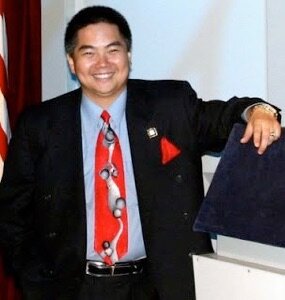
One of the big problems in chess is there is so much corruption, incompetence, and hanky panky when it comes to the governance aspect of the game.
I recently visited the Chess Hall of Fame for the Opening of a Women’s Chess Exhibition. I was stunned to see the names of some elected to the US Chess Hall of Fame (whom I feel have no business being in the Hall of Fame or at the very best on the borderline) while some great players being omitted. Many in my generation, and whom I had the honor and pleasure to play against, should have been in and they are not. Here are just a few examples (and the argument about age is out the door because some were younger when inducted):
GM Max Dlugy
-Former World Junior Champion
-Former US Junior Champion
-Was ranked #1 in the world in blitz
-Was ranked as the top American junior
-Was a member of the US Olympiad Team
-Twice finished 3rd in US Championship and much more…
GM Patrick Wolff
-2-time US Champion
-Former US Junior Champion
-Former US High School Champion
-Was ranked as the top American junior
-2nd for Vishy Anand in the World Championship and much more…
IM Stuart Rachels
-Former US Champion
-Former US Junior Champion
-Youngest US Master at 11 yrs 10 mos, a record that lasted from 1981-1994 and much more…
GM Susan Polgar
-Former Triple Crown World Champion (1st in history to win World Blitz, Rapid, Classical Championship)
-1st woman to earn the GM title through traditional competition
-1st woman to qualify for the “Men’s” World Championship
-Ranked #1 in the world at 15 and in top 3 for nearly 25 straight years
-10 Olympiad medals (5 gold – 4 silver – 1 bronze) – Never lost in Chess Olympiad on board 1 in 56 consecutive games
-Coach the #1 ranked Men’s Division I team & winning 5 straight Division I Final Four Championships
-1st to be named Coach of the Year in the US and in the world
-Organizer of dozens of prestigious events, including the SPF National Girl’s Invitational (first ever all-girls national event approved by the USCF which launched a big surge in girl’s chess in the US), Mayor’s Cup, SPICE Cup (highest rated invitational events in US history until the Sinquefield Cup), almost 40 major scholastic events which the SPF has awarded through its partners & sponsors over $4 million in chess scholarships & prizes) and much more…
GM Ilya Gurevich
-Former World Junior Champion
-Former World Youth Champion
-Former National Scholastic Champion and much more.
Here is one more player who should have been listed: GM Bill Lombardy, one of the greatest American GMs (https://en.wikipedia.org/wiki/William_Lombardy). He holds the record as the only World Junior Champion with a perfect 11-0 score. He won tons of Olympiad medals for the US, and he was Bobby Fischer’s trainer and second. He was selected to the HOF but he has a serious problem with the USCF and basically told them to go to hell. Because of this, his name is not listed. Bobby Fischer also told the USCF to go to hell but he is in the HOF. So what is the difference?
Here is the link to all who have been elected to the US Chess Hall of Fame (http://www.worldchesshof.org/hall-of-fame/us-chess?page=6), from the most recent inductees. Many of them have never won a US Championship, US Junior Championship, World Championship, or Olympiad medal, etc. Many have strong resume while representing other countries prior to coming to the US.
So why are they there? What are the criteria? No one knows and no one can explain. The bottom is if you are liked, you are in. If you are not, you will not be or they will put you off to infinity.
The USCF also screams constantly that FIDE is corrupt. Even as Kasparov sued FIDE (which costs FIDE millions of euros), got banned for 2 years by the ethics commission for corruption, and broke off from FIDE to form PCA which disrupted the World Championship cycle for many years (I am not saying what he did was right or wrong since I am a fan of him as a player, it is for others to judge), he was elected to the World Chess Hall of Fame. So FIDE has no problem electing their biggest opposition. Why does the USCF not elect deserving people who have clearly proven themselves on the chess board?
What is the answer? Is it dirty chess politics, total incompetence, or something else? One thing for sure, no one can explain the specific criteria and why some in the past were voted in while others much more deserving are not? Why not reveal the votes and the reasoning behind them? In fact, why not compare the resume of the potential inductees vs. the ones who were elected.
Silence! Absolute silence! The dirty chess politics & total incompetence will continue as usual.
[Article originall entitled “Dirty Chess Politics, Complete Incompetence, or Something Else?”]
Saudis, Satan and so on
BEIRUT, Lebanon — Saudi Arabia’s top cleric has declared the playing of chess “forbidden,” calling it a waste of time and money that creates hatred between players.

A member of the Saudi Chess Association, Musa BinThaily, took to Twitter on Thursday to defend the game, saying that it had nothing to do with gambling and that the association had held 70 events in the kingdom. He posted photos of Saudi players at the group’s events, including one that showed members of the group posing with a prince from the United Arab Emirates.
Aliens, Gaddafi, Chess City, et cetera
A guest article by
By Shaun Walker Moscow correspondent, The Guardian
Leader of world chess body steps down over alleged Syria links
Russia’s Kirsan Ilyumzhinov – who built a ‘Chess City’ and says he was abducted by aliens – has temporarily withdrawn from FIDE after US imposed sanctions
Kirsan Ilyumzhinov says his only involvement with Syria is delivering chess sets to the country.
The head of the world chess body, FIDE, has temporarily relieved himself of his functions, after being placed on a US sanctions list for alleged ties to the regime of Bashar al-Assad.
Kirsan Ilyumzhinov, an eccentric Russian politician who claims to have been abducted by aliens, said the decision was necessary as contracts needed to be signed for a 2017 chess world championship, due to be held in the US. His deputy will now take charge.
“Mr Ilyumzhinov’s decision to withdraw from any legal, financial and business operations of FIDE is to enable him to concentrate on clearing the situation with the US Department of the Treasury,” said a statement from Nigel Freeman, FIDE’s executive director.
The US announced sanctions against Ilyumzhinov last month, claiming he had links to the Syrian central bank. The Russian last visited Syria in 2012, when he played chess with Assad, and claims his only involvement with Syria is delivering chess sets to the country. Ilyumzhinov also had cordial relations with the former leaders of Iraq and Libya, Saddam Hussein and Muammar Gaddafi.
Ilyumzhinov is, to put it mildly, an unusual figure. For many years he ruled the largely Buddhist republic of Kalmykia, in Russia’s southern steppe region. He built a “Chess City” on the outskirts of the capital, Elista, and introduced compulsory chess lessons in schools.
He believes chess is a “cosmic game” that was brought to earth by aliens, and has repeatedly claimed that he was abducted from the balcony of his Moscow apartment by aliens wearing yellow spacesuits.
His autobiography included chapters with titles such as “Without me the people are incomplete” and “It only takes two weeks to have a man killed”. One of his aides was jailed for the murder of an investigative journalist in 1998.
Madonna vs. Julia Roberts and other matches
A guest article by
By Frank “Boy” Pestaño
Chessmoso
CHESS is the most popular pastime in the planet today with an estimated 600 million people—including a lot of celebrities—who play the game. Featured today are dream celebrity matches and my evaluation on who is the better player.
In Hollywood, the ideal match would be between the greatest entertainer of all time, Humprey Bogart and the most influential director of the 20th century, Stanley Kubrick. Both are rated about 2200.
Before he became famous, Bogart survived by hustling strangers at 50 cents per game in chess parlors at the New York Times Square. On the other hand, Kubrick’s lifelong obsession was chess and he supplemented his income by also hustling strangers in Washington Square Park and in various Manhattan Chess clubs. My assessment is that Bogart will be the victor by the tiniest of margins although George C. Scott will not agree as he has a minus score against Kubrick.
Among the ladies in Hollywood, nobody even comes close to the chess prowess of Julia Roberts and Madonna. A contest between the two would generate a lot of interest as both are good players.
In the Internet Chess Club, Madonna has played an incredible 19,000 plus games and the highest rating she achieved was 2003 in Feb. 16, 1999. She is being tutored by Scottish champion IM Alan Norris.
On the other hand, Roberts is a chess fanatic who has played over 10,000 games in the Internet. She attained a 2057 rating in July 22, 2002, her highest so far.
I think that someday they will really meet on the chessboard and the winner will probably be Madonna 5.5-4.5 in 10 games.
Among the singers, Bono (U2) and Sting would be a good match. Sting , whose real name is Gordon Sumner, is the lead singer and bass player of the band The Police. He wanted to be a grandmaster while still in his teens and once played Garry Kasparov on June 29, 2000 in New York in a simul together with the other band members.
Here’s a quote from 1987 where Bono, whose real name is Paul Hewson, talked about his interest in chess: “ One day I’d wake up and want to be a chess player—the best. I’d read a book on it, and at 12, I studied the grandmasters, and I was fascinated.” He was a regular tournament player at age 12.
In a contest, Sting would be a close winner in 10 games, 6-4.
Vladimir Klischko and Lennox Lewis have several things in common. They were both heavyweight boxing champions, are huge, and both hold doctorate degrees. They are also chess fanatics without any equal in the sports world.
Klischko has played friendly games with his best friend, World Champion Vladimir Kramnik and has also played blitz matches alongside Garry Kasparov.
Lewis was featured in the internet last May 23, 2006 and his sponsors offered $1,000 to anybody in the world who could trounce him in chess online.
Lewis has several times expressed his interest to play Vladimir and it would be very interesting indeed on who would prevail. Anyone of them can win a tournament in Cebu. Klischko should win 6-4 in a 10-game match.
I was thinking of originally pairing Roger Federer against Boris Becker, however, it would be a mismatch as Becker is clearly superior in chess. But not against Ivan Lendl. Lendl originally wanted to be a professional chess player as he was taught by his father, Jiri, who was Czech Junior chess champion.
Among the celebrities chosen to play Garry Kasparov was Becker which was aired “live” in CNN for one hour on March 15, 2000. Kasparov was in Manhattan while Becker was in Munich. Becker should prevail over Lendl, 6-4, in 10 games.
Review of
The Immortal Game:
A History of Chess, by David Shenk.
(Doubleday, $26)
A guest article by
By Lawrence Klepp
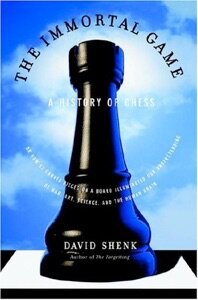
But on the other side are all the eminences who have been pondering their moves for the past 1600 years. Voltaire and Rousseau. Cervantes and Poe. Adams, Jefferson, Madison, Monroe. Frederick and Peter and Catherine the Greats. Napoleon and Churchill. Newton and Einstein. Lenin and Lennon. Madonna and Arnold Schwarzenegger.
Chess exerts a vertiginous fascination. It draws you into its self-enclosed world of infinite possibilities, forking paths, traps and escapes, its cryptic, uncanny labyrinthine elegance. The game takes on a metaphysical aura, as if the secrets of the cosmos were hidden among those 64 squares and 32 feudal characters of varying powers. You can see how people get lost in it, or lost outside it.
The two greatest American players, for instance. Paul Morphy, a New Orleans native, dazzled and baffled Europe with his brilliant play in the 1850s, arriving when he was just 20 and thrashing every lofty opponent. But after returning to New Orleans a few years later, he sank into reclusive paranoia “and in his final years,” David Shenk writes, “could be found walking the streets of the French Quarter, talking to invisible people.” Bobby Fischer, considered by many chess experts the greatest player of all time, spectacularly broke the Soviet monopoly on the world championship at Reykjavik, Iceland, in 1972, but he forfeited his title and eventually went into a nomadic exile marked by violent anti-American and anti-Semitic rants before his death in Iceland in 2008.
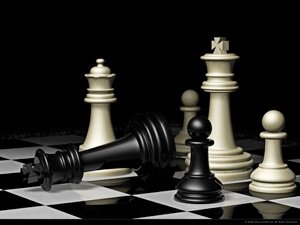
Should it come with a surgeon general’s warning? “May lead to disorientation, insomnia, hallucination, celibacy”? Does it detach us from reality?
Shenk’s basic argument in this beguiling history, which moves more like a knight than a straightforward rook, jumping over material and landing in unexpected places, is just the opposite. The complex structures and strategies of chess are profoundly related to the complexities of human thought and decision-making. It’s a good training for life. “For Life is a kind of Chess,” as Ben Franklin, an avid player, wrote in “The Morals of Chess” (included, along with legendary games, as an appendix to the book). Shenk, a late convert to the game himself, recounts his visits to schools in troubled New York neighborhoods where chess programs have given kids a new sense of purpose and self-discipline.
It emerged around the 5th century as the Indian war game chaturanga, which may have evolved out of other board games played along the Silk Road to China. It reappeared in a more recognizable ancestral form in 6th-century Persia, where it was called chatrang. By then the 16 pieces on each side of the 64-square board (not yet checkered) were a king, a minister, two elephants, two horses, two Rukhs (chariots), and eight foot soldiers.
After the 7th century, chess, shatranj in Arabic, became deeply embedded in Islamic culture, which produced the first masters and the first chess treatises and problems. Caliphs and philosophers and merchants and adolescent girls all learned the game. It thus arrived in Spain, and soon caught on across medieval Europe.
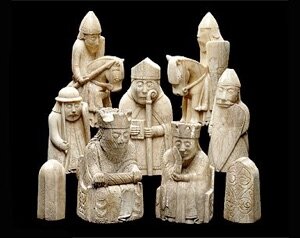
In medieval Europe, though, it wasn’t taken as seriously as it was in Islamic territory. Nobody studied the game or developed sophisticated strategies. It was played under different rules in different places, including the heresy of throwing dice to determine moves. But by the Renaissance the wayward European games began to coalesce into chess in its modern, dynamic form. Middle Eastern chess had been a slow, incremental game. The piece known there as the minister and in Europe as the queen, once limited to one-square moves, became the most powerful piece on the board in, not coincidentally, Spain at the time of Queen Isabella.
The Enlightenment, with its flair for combining logic and pleasure, brought together chess and coffee at the Cafe de la Rgence in Paris and other urbane chess cafs. The war-simulating game seemed, despite increasingly fierce and methodical competition in the 18th and 19th centuries, to promote cosmopolitan tolerance and civility. The 20th century, offering, as usual, a depressing contrast, let politics into it, and Nazis and communists competed for supremacy in grotesque chess propaganda.
Shenk’s book is unpretentious, free of technical jargon, and accessible, even to nonplayers, though some serious experience playing helps when you come to his account of successive strategic styles (romantic, scientific, hypermodern) and the interspersed chapters that reproduce the breathtaking gambits and sacrifices of the “Immortal Game” played in London in 1851 by Adolf Anderssen and Lionel Kieseritsky.
In the last chapters Shenk resembles a time-pressed player racing through an end game. He has too little to say about the history of world championship matches and the innovations and styles of some of the champions. He’s attentive to the cultural echoes of the game, spending some time on Marcel Duchamp’s balancing act of droll art and serious chess and Lewis Carroll’s chess-themed Through the Looking-Glass, but he skips, among much else, the knight’s match with Death in Ingmar Bergman’s The Seventh Seal (1957) and Paolo Maurensig’s remarkable novel The Luneburg Variation (1993). Still, his history has an improvisational dexterity that suits its subject, and by putting a number of stunning, historic games on display, it checkmates any lingering high chess ambitions you might have in about three moves.
In Memory Walter Browne (1949 - 2015)
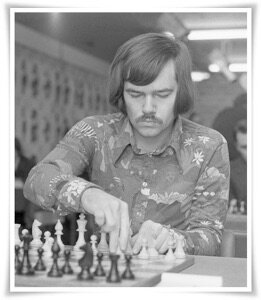
There is a story about him which is characteristic and even true. I was a witness.
So in some of IBM's tournaments Walter was a bit late and rushed in. He sat down to the table and made his move energetically. But there were some chuckles from the spectators. That's it was not his board. Never mind, he run to another table made his move and sat down. Same thing happened: sniggering could be heard. Well, it was still not the board he searched for but it took just a little more time for him to find it...
We lost a true lover and an artist of chess. See you there Walter! If you like we can have the decisive game over there! You have White...
András ADORJÁN
International Grand Master of Chess ADORJÁN András (1950-20??) Olympic Champion, World ch Candidate, 3-time Hungarian Champion
The Dragon Variation

[Black "Dragon 5"]
[WhiteElo "2202"]
[BlackElo "1932"]
My opponent cuts a few corners in development in order to obtain the dreaded ‘dragon bishop’ with Bg7 in the Sicilian Opening.
Chess is a game usually played to gain a relative material advantage over opponent, but chess is not resolved that way. The situation of the King is not relative but absolute!
Here follows a Sicilian Opening which has a dozen main variations, this one is the ‘Dragon Variation’.
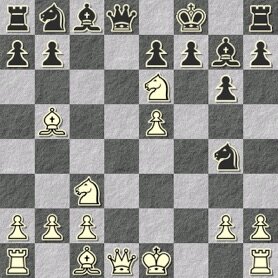
I was calculating the shortest route to mate if the pawn at f7 took the knight at e6, and rather than capture the black Queen directly, 0-0+ seems faster, but my opponent didn’t like any variation from here on and resigned.
The making of a world record — Part 3: The Response
Susan Polgar's reply
I would like to say that the World Record Simul was the hardest and most complicated thing to organize and achieve. This was planned more than two years ago, even before Andrew's World Record. My team and I had discussions with New York, via Mr. Ken Podziba, NY City Sports Commissioner, about Grand Central Station or Central Park; and with California, via Mr. Erik Anderson, founder of AF4C, which organizes the annual $250,000 US Championship, about Lego Land; and also with others about hosting the World Record Simul, before we decided to choose the Gardens Mall in Palm Beach Gardens, FL, one of the most prestigious upscale shopping centers in the state of Florida.
Before a final decision was made in regard to the location, we had a face-to-face meeting with the organizers in Palm Beach Gardens which included the management of Gardens Mall, representatives from the Palm Beach Sports Commission, the North Palm Beach Chamber of Commerce, the Mayor's office of Palm Beach Gardens, the Palm Beach Post, the local chess organizers, chess clubs as well as the Chief Organizers Mr. Joel Channing and Mr. Don Schultz. The reason why we chose Palm Beach Gardens was they offered the biggest staff to help organize every single little detail to make the event successful.
Even after the decision was made, it still took more than six months to organize this extremely difficult event. Mr. Joel Channing and Mr. Schultz had countless meetings with the staff in Florida during the six months preparation phase. They reached out to local government, sponsors, business owners, corporations, schools, clubs, etc. My team also did things from NY to reach out to additional people. Overall, more than 20 people worked on this project for more than half a year and more than 50 people helped in various capacities. As I mentioned earlier, this was the hardest and most complicated event to put together.
For your information, no one (especially me) had any intention of breaking any other record beside the 321 games by IM Andrew Martin. That was hard enough in itself. I will explain how the rest happened later in this letter. In addition, just to ensure that the record can be broken, I hit the gym almost daily for a year to prepare physically.
Even with all the meticulous planning and preparation, we had to cancel the original date which was planned in June 2005. It was too difficult and we could not make it happen the first time. We could not get enough players to commit. Everyone involved unanimously agreed to delay the event by two months to August 1-2 to give us the best chance to succeed. Even with the extra two months, we had to literally go through hell to make it happen. We even considered canceling the event the second time because we did not think we would hit the numbers. At the end, we decided to give it our best shot and went for it on August 1, 2005.
We did have some luck a few days before the simul. I was in Palm Beach Gardens a week early, to meet the media and record my new animated chess DVD. The filming took place at the WPBF-TV (ABC) studio in Palm Beach Gardens. While I was shooting, Mr. Paul Azzurro (President of Chess on DVDs) and my business manager received a tour of the TV studio. That was when they accidentally met one of the station's anchors Mr. John Shainman.
When John heard about the World Record Simul, he thought that the event was fascinating so he decided to interview me immediately. I was then interviewed during the DVD filming lunch break. Various clips were shown about 8-9 times on WPBF-TV (ABC) a few days before the simul took place. This helped create a big buzz and got many more people to show up.
We also got tremendous help from many big newspapers in Florida promoting the World Record Event (Palm Beach Post, Sun-Sentinel, etc.). In addition, our organizers made calls to as many people as they could to up to the last minute. They contacted every single chess club in Florida and even some in neighboring states. At the same time, I was contacting everyone I know in Florida. My business manager sent out thousands of emails as well.
Even with all the preparation and hard work, we were on pins and needles on the morning of the simul. I personally arrived at 7 a.m. to mentally prepare. The simul was supposed to be at 10 a.m.. At 9:30 a.m., we only had about 250 players checked in. At 9:45 a.m., we had about 275 checked in. At 10 a.m., we had only about 305 people checked in. The simul was now officially late. We only managed to check in about 315 people at 10:15 a.m.. That is why we had to delay the event until approximately 10:30-10:35 a.m. to get 326 players and the simul officially began with Mr. Eric Jablin, former Mayor and current Vice-Mayor of Palm Beach Gardens. Multiple TV stations were on hand along with a number of print reporters.
Approximately 45 minutes to an hour after the original 326 games had started, more and more players were still arriving because of the newspaper and TV promotion. As the number of extra people reached more than 50, the organizers came up with the idea of allowing these people to join the simul for an outside shot breaking the second record of consecutive games played. They came to consult with me and I told them that I have no problem with it. Since extra sets, boards and spaces were available, they immediately set things up and we were on our way to attempt to set both records at once. After a player lost, he/she had the option to start another game or give up the seat for another player to start a new game. The official record certifiers marked down each new game played and added it to the second total.
The biggest help I actually got to successfully complete the simul came from the dazzling work of the professional engineering and designing staff. They worked very hard to come up with the most efficient method to set up the tables and chairs to minimize the walking distance to speed things up. The worked for a number of months to perfect the brilliant set up.
In addition, my team came up with an ingenious system in placing all the strongest players in one section knowing that their games would most likely last the longest. The organizers had a list of all the pre-registered players with full names and ratings if applicable. Each player had to wear their simul ID numbers in the front and on the back of their commemorative T-Shirts at all times. This plan saved additional hours to complete the rounds as the weaker players were eliminated much faster. The plan worked out perfectly. I estimated that it probably saved me at least a few hours from the total time.
During the simul, the official designated record certifiers were walking alongside with me the entire time to record all detailed information. They never left my side with the exception of a few rest room breaks. These dedicated officials probably ended up walking more than I did. As I was walking, I was wearing a pedometer to record the walking distance and steps taken. Hundreds of pictures were taken before, during and at the conclusion of the event.
Countless people were video taping the event (since it was in the middle of a shopping mall) including TV media. We are all disappointed that even though the organizers invited the Guinness people to send a representative, no one came. That is why the organizers decided to have additional record certifiers to make sure each detail is precisely authenticated. I am sure they would be more than happy to furnish the folks from Guinness with any additional information as needed.
There is one fact I would like to clarify. Each game did not take a minute to complete by both sides but only by me. While I was walking, my opponents had plenty of time to think. We did not allow any pass. Therefore, a move must be made as I arrive at the board. Then I responded basically instantly. My moves against the weaker players did not take more than a second or two at most. If each game averages 30 moves or even less, it would take about a minute or less to complete. After all, I gave more than 1,000 exhibition simul games in the last year or two throughout the United States and North America. Therefore, I had a lot of practice in advance.
Since the event was held in the middle of a very popular shopping center, we had no choice with the crowd. Thousands of people saw the event. Unfortunately, we made a minor mistake in holding the event during the school summer break. Therefore, we had a lot less young people than expected and the majority of the players were adults. That actually turned out to be a blessing in disguise even though some of the players that stayed almost until the end were children.
The mall was opened throughout the night while it usually closes at 9 PM. The mall management hired additional security personnel to stay with us until the conclusion of the simul. Restaurants located in the mall donated food for the players and volunteers, and Coca Cola donated the refreshments.
Many sponsors such as Chess4Less, Excalibur Electronics, the World Chess Hall of Fame, American Chess Equipments and the Susan Polgar Foundation donated goodies for the players including the chess sets and commemorative boards. TV stands were also set up throughout the entire playing area with different movies playing to keep the children entertained. We had so many people volunteering to help. It was an incredible team effort from so many people for many months and everyone took pride in what they do.
I must say that Andrew Martin played a major role in helping me break the records. He was so gracious to offer his valuable advice in what and what not to do from his own personal experience. Therefore, we made sure to work out all the kinks before hand. Even though I physically worked out very hard, because of Andrew's warning, I worked even harder with my physical fitness. I was exhausted at the end but I was in much better shape than expected due to the extra physical preparation. Thank you Andrew!
Thanks to the hard work of Mr. Channing and Mr. Schultz on behalf of the United States Chess Federation and the United States Chess Trust, members of the organizing committee representing Gardens Mall, the city of Palm Beach Gardens and Northern Palm Beach Sports Commission, etc., and countless other volunteers spending hundreds if not thousands of combine hours to make this event happen, we managed to pull it off. Playing chess was actually the easiest part.
I hope that Andrew will attempt to break this record as soon as possible. Then I will attempt again to break his new record. Perhaps we can start a new tradition for the benefit of chess. I think this will be beneficial to both countries and chess in general.
Best wishes,
Susan Polgar
The making of a world record — Part 2: The Challenge
A letter from previous record holder IM Andrew Martin challenged the record:
I am interested in the statistics of the recent Susan Polgar simul records, in the light of my own experience as the previous holder of this Guinness Record.
Our display took six months of meticulous planning, day in, day out, to get 321 people in the same place on the same day. We had to provide Guinness with photographic and documented evidence to satisfy them that the opponents were of a minimum required standard. Right up until the last minute we could not be sure that we had the number of players needed.
We sent Guinness game scores and all ratings of the opponents (if they had one). Roughly 50-75 were of club standard, including several junior internationals and 30-40 1800+ players. I found this a really gruelling event and was only too glad when it finished. Yet Polgar seems to have taken this record to an entirely new level, but my question is.....how ?
Let's take a look at the stats.
1st record (3 records according to the press release): Most opponents/Most games won/Highest percentage 326 opponents 309 wins 14 draws 3 losses 96.93%.
2nd record Most consecutive games 1131 games - 1112 wins 16 draws 3 losses. The percentage is astronomical. Total opponents 554
I just don't understand this second record. How can one play so many games in such a short time? (16.5 hrs = 990 mins) That's less than 1 min per game overall! How long were these games, how many moves?
Somehow Polgar fits in an extra 805 games, winning 803 (!!) and drawing only two, finding an extra 228 opponents out of nowhere and fits it in seamlessly with the other record. Amazing!
How do you persuade so many people to sit there for so long waiting for the moves to be played? One round takes 30-40 mins minimum. Kids, OAP's, very weak players just aren't capable of it! We had serious crowd control problems on the day because we had a lot of kids.
Susan is a great player, so of course she is capable of a great result. But has the marketing gone too far on this occasion? What credibility can we attach to these figures? And should these records stand?
IM Andrew Martin
The making of a world record
— Part 1: The Event
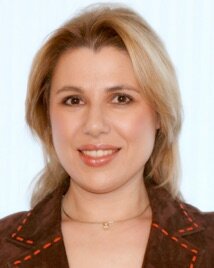
During her record-breaking event Susan Polgar walked a total of 9.1 miles though a Florida mall, in high-tech sneakers, drinking orange juice. She faced 326 opponents simultaneously, scoring an unprecedented 99.03%. After breaking the Guinness Book's simul record Susan Polgar went on to attack a few more. Here are the records she broke:
Most Simultaneous Games Played: official record against 326 players: 309 wins, 14 draws and 3 losses = 96.93% in 16 hours and 30 minutes (the previous record was 321 games, with 294 wins, 26 draws, 1 loss = 95.64%, by IM Andrew Martin, England).
Most games won: 309 (Andrew Martin: 294)
Highest percentage: 96.93% (Andrew Martin: 95.64%)
1,131 Consecutive Games Played: Overall statistics which included 551 opponents: 1,112 wins, 16 draws and 3 losses = 99.03% (previous record: 1102 games by WGM Anna-Maria Botsari, Greece)
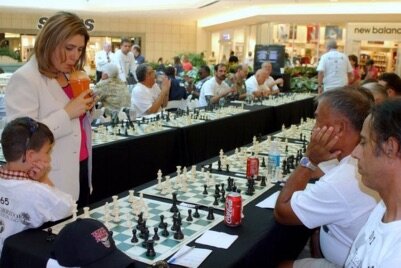
Never Back Down in the King’s Gambit
White: Chess One 2202
Black: Barclays 1747
Correspondence game, Jan 2015
The ‘wisdom’ about playing the King’s Gambit is ‘never back down’, so here is the ‘kitchen sink’ attack, an unofficial variation, and, to mix metaphors, welcome to the Wild West.
1.e4e5
2.f4exf4
3.Nf3f5
4.e5g5
5.d4g4
6.Bxf4gxf3
And there it is, a knight sacrifice for ‘only’ strategic advantage, but it does give me, the White player, a lot of initiative, another 14 moves of it, or at least, having come to the end of my book knowledge with the next move, I certainly hoped so!
7.Qxf3h5
8.Bc4Ne7
Otherwise Bxg8 Rxg8, Qxh5+ is grim for black. OTOH he hasn’t developed his Queen and this allows White a few more developing moves.
9.Nc3Ng6
10.O-Oc6
White’s play is suspect, is it better to play Qe3 somewhere in this sequence in order to get in Bg5?
11.Rae1Bb4
12.d5c5
If you are up material you should try to exchange pieces, on the other hand in this scenario you will be trading your only active pieces to do so. The sacrificed Knight is at this stage of the game equal to all Black’s queenside of inactive Rook, Knight and Bishop. The thing to do is to keep pushing, never back down, so…
13.e6d6
Even so, White’s breakthrough play must be decisive in order to win and if only the f4 bishop was not in the way, the Queen could invade decisively, so how to move it without losing a tempo allowing Black to consolidate. Sacrifice it, but first, the other white bishop gets into the action… and I ask the reader to believe that this is a calculated variation.
-
14.Bb5+Kf8 Diagram.

Giving back the piece here with Knight or Bishop to d7 would also incur Bxd6 and then Qxf5. Black has been too passive earlier and can’t find enough piece protection for the King.
15.Bxd6+Qxd6
16.Qxf5+Kg7
17.Qf7+Kh6
18.Rf6Kg5
19. Rxg6+Kh4
20. Qf6#
Origins of Modern Chess
Modern-day chess was invented in Valencia, say experts
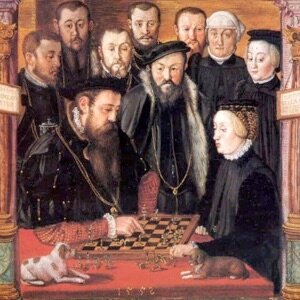
It was based on the game Chaturanga, from India, before being adopted by the Persians and then brought to Europe by the Arabs, the programme reveals.
The end of the 1400s was a time of great economic and cultural splendour in the city of Valencia and its intellectual élite, who were mostly Jewish, adapted the existing rules of the game to make it more agile and speed it up. [caption: 1552 Hans Meulich (1516-1573) Duke Albrecht V. of Bavaria and his wife]
Until then, it was a very slow and sedentary process, but the Jewish upper classes altered it, basing it upon their perception of the courting ritual among the aristocracy and introduced the figure of the queen.
She had hitherto been known by the Arabs as the visir and was of a much more lowly status than the current chess queen.
The allegorical poem Scachs d’Amor, written jointly by three authors in 1475 in an early form of catalán, the language spoken on the east coast of Spain and which evolves into valenciano between the provinces of Castellón and Alicante, mentions the queen for the first time, proving that she was not, as originally believed, based upon Isabel of Castilla.
Scriptwriter and director Agustí Mezquida believes it is more likely the chess queen was based upon María of Castilla, consort of King Alfonso the Magnanimous, although chess expert Marilyn Yalom of Stanford University in the USA believes the chess queen does not come from one specific figure, but from several, since centuries ago queens began to play a much greater role in governing.
Some 20 years after the poem was written, the erudite Valencian Jew Francesch Vicent compiled and published the modern-day rules of chess under the title Llibre dels jochs partitis dels scachs en nombre de 100 (‘book of chess games in numbers of 100′), written in valenciano, and which was considered to be the ‘holy grail’ of books on the subject.
Francesch Vicent is said to have sought refuge in the Vatican under protection of the Borgia family, who lived for over 500 years in the palace in Gandia (Valencia province) when Isabel of Castilla and Fernando of Aragón evicted all Jews from the mainland.
Vicent is said to be chess master to Lucrecia Borgia, whose father became Pope Alessandro in the 15thcentury, and manuscripts of his works have been found in Perugia and Cesena in Italy as well as in a book attributed to the Portugese writer Pedro Damiano – possibly Vicent’s pseudonym – published in Rome in 1512.
The book by Damiano led everyone to believe for years that the game of chess as we know it today was invented in Italy and expanded all over the world as a result – given Italy’s immense power from the Roman Empire through to the late Renaissance – but experts now realise it came about in Valencia.
Only one copy of Francesch Vicent’s work was ever found in Spain after the Inquisition – in the monastery in Monserrat, inland of Valencia city, but this disappeared in 1811 after the Abbey was assaulted and sacked by Napoleon’s troops.
It may have been saved from the flames by the monks, since it is thought to have reappeared 101 years ago in Barcelona, according to documents accrediting its sale to an anonymous north American collector by the bookshop owner Salvador Babra.
Documentary director Agustí Mezquida travelled to the USA to visit Cleveland public library after finding information suggesting the American chess book collector lived there and was called John G White.
But as the TV programme shows, Cleveland library has no record of ever having had Francesch Vicent’s book in its possession.
This means it remains on the missing list, but its contents detailing the rules of chess are still followed today, 515 years after it was written.
The documentary, La Dama de Ajedrez (‘the chess queen’) involved 20 or so international chess experts and historians and was filmed in various parts of the Comunidad Valenciana, Catalunya, the Basque Country, the USA, France and Italy, and was supported by the Valencia regional government and the Spanish central government’s ministry of culture.
Barbie, Sexism, Chess & Engineering
“The latest affront to basic decency in gendered toy marketing comes from a Barbie book that tells girls they can't be game developers or programmers.
The book is bafflingly called Barbie: I Can Be a Computer Engineer. It was written by Susan Marenco and published by Random House. Despite its encouraging title, Marenco's book actually tells preteen girls that Barbie can only contribute to the design of the game she's building.” — says The Daily Dot
On FaceBook one guy, let’s call him Brian, doesn’t get it
“This article is a bit of an overreaction... Who do all the white male level designers blame for holding them back? What if they're heterosexual too? Like me. I am a game level designer and junior environment artist. I need someone else to code for me.
So now Barbie can't have guy friends with skills because that would be sexist to have capable guys in her stories? Maybe they should all be absentee fathers and fraternity date-rape d-bag stereotypes?
There is NOTHING in that book that says she can ONLY be an artist. Or if there is, they didn't quote it. So am I supposed to feel like a failure now since it's insulting for a woman to be one? Gee thanks for letting me know what the world thinks about game level designers.”
“The women playing in those areas have the same opportunities as boys. But the boys are more competitive by nature so they put more effort into getting better on average so there is a false sense of inequality.”
I think the point Brian misses is that the programmers are, or are all assumed to be, males, whereas females have pink computers and are represented as just designers. In the book itself Barbie bitches to a friend, ‘just because I have a pink computer, doesn’t mean I am not a feminist.’ And this is true, as the two female writers with advanced degrees know.
Brian then cites Judit Polgar, strongest woman chess player ever, as says “’She is a legend. Because she put in the extra effort. Other women who aren't at that level aren't there because they don't put in the effort.”
Burt the truth is that Grandmaster Judit Polgar and her two chess playing sisters were home-schooled in Hungary by a father who didn’t let the very open and hostile misogynistic factors of his culture dominate his children.
All 3 Polgar sisters were /removed/ from public mores and expectations, and home schooled because of the wide-spread misogyny in Hungarian society. This seems to be what Susan Polgar has written. She tells a good joke about growing up and playing chess and attitudes at the time, that 'she had never beat a healthy man.'
Math and Chess for America’s Schools
A letter addressed to Lady Michelle Obama, by Rob Mitchell, Murfreesboro, TN cited a Canadian report:
Education is one of the single largest state budgetary expenditures. Educating our children and providing them with the necessary tools to become productive citizens is a moral and legal duty of parents and governmental entities. Yet even with the increased focus we place on education our students still fall below national norms in math scores.
There is an efficient and innovative way to teach our students mathematics. That is by integrating math with the game of chess.
Chess has long been considered a way for children to increase their mental prowess, concentration, memory, and analytical skills. To anyone who has known the game, it comes as no surprise that these assumptions were actually proven in several studies on how chess can improve the grades of students.
Although chess has been shown to increase the mental abilities of persons of all ages, the main studies have been done with children. This is first for the obvious reason that students are constantly tested anyway, and therefore the data need only be analyzed, and secondly because children's mental development is more rapid and can be more easily measured than persons at a later life stage.
Early Conclusions
After several informal studies were done in the early 20th century on the effect that chess has on logical thinking and other such functions, a primary conclusion was drawn that chess does in fact not only demand such characteristics, but develops and promotes them as well. John Artise in Chess and Education wrote "Visual stimuli tend to improve memory more than any other stimuli; chess is definitely an excellent memory exerciser the effects of which are transferable to other subjects where memory is necessary.”
With this in mind, legislation in the U.S. in 1992 promoting and encouraging the incorporation of chess into the curriculum of schools was passed. Funding is available under the “ Educate America Act” (Goals 2000) public law 103-277, section 308.b.2.E. The U.S. joined the more than 30 countries which already had chess included in some form in their school curricula.
In part due to the educational community, which has noted the increased academic performance of students participating in chess, there has been an explosion in the number of children playing chess in the U.S. An estimated 250,000 children in the U.S. are introduced every year through the school system to the basics of the game. Studies have already been done to confirm the hypothesis that chess is linked to increased grades in school.
Case Studies
As reported in Developing Critical Thinking Through Chess, Dr. Robert Ferguson tested students from seventh to ninth grades from the years 1979-1983 as part of the ESEA Title IV-C Explore Program. He found that non-chess students increased their critical thinking skills an average of 4.6% annually, while students who were members of a chess club improved their analytical skills an average of 17.3% annually. Three separate tests to determine how chess affects creative thinking were also done as part of the same study. It concluded that on average, different aspects of creative thinking had improved at a rate two to three times faster for chess playing students, as opposed to their non-chess playing counterparts.
Subsequent studies by Dr. Ferguson further supported these original conclusions. In the Tri-State Area School Pilot Study conducted in 1986 and Development of Reasoning and Memory Through Chess (1987-88) chess-playing students showed more rapid increased gains in memory, organizational skills, and logic.
In Zaire the study Chess and Aptitudes, was conducted by Dr. Albert Frank at the Uni Protestant School, during the 1973-74 school year. Using sufficiently large experimental and control groups, Dr. Frank confirmed there was a significant correlation between the ability to play chess well, and spatial, numerical, administrative-directional, and paperwork abilities. The conclusion was that students participating in the chess course show a marked development of their verbal and numerical aptitudes. Furthermore, this was noticed in the majority of chess students and not only those who were better players.
A study conducted in four large elementary schools in Texas in 1997 further demonstrated the positivism of chess. Through the Texas Assessment of Academic Skills (TAAS), the study was done to test the difference that chess playing had on standardized tests. These schools selected all had a chess program in existence for a minimum of two years. Since a few thousand total students took the test and all types of students were tested from special education students to gifted and talented students, the sample was large and diverse enough to make a concrete conclusion. There were significant improvements in both reading and math for all grade levels and all classes of students (regular, gifted and talented, special education, academically able, etc.). Through the Texas Learning Index, or TLI, it was determined that on average the students who played chess improved in reading and mathematics at a rate between 1.5 and two times faster than non-chess playing students.
In terms of verbal improvement specifically, a study by Dr. Stuart Margulies from 1991 addressed this. Students with higher verbal skills tend to score higher on word problems than their lower performing counterparts. The "Margulies Study” is one of the strongest arguments to finally prove what hundreds of teachers knew all along-chess is a learning tool. (Inside Chess, February 1994).
"Can chess promote earlier intellectual maturation" was the question posed in the Chess and Cognitive Development study directed by Johan Christiaen from the 1974-76 school years in Belgium. The results again clearly confirmed that the group of chess playing students showed significantly more improvement then the non chess-playing students. In 1982, Dr. Gerard Dullea mentioned this study and proclaimed "…we have scientific support for what we have known all along-chess makes kids smarter! (Chess Life, November 1982) In a similar study done in a test series in New Brunswick, Canada called Challenging Mathematics, the mathematics curriculum used chess to teach logic from grades 2 to 7. The average problem solving score in the province increased from 62% to 81%.
Conclusions
We can now say with full confidence that chess has been PROVEN to enhance creativity, problem solving, memory, concentration, intellectual maturity, self esteem, and many other abilities that a parent or teacher would desire. We should act now to provide our children with an innovative and exciting approach to learning mathematics: Math and Chess for America’s Schools.
Real Survivor
Guest article by Grandmaster Susan Polgar
Jun 2, 2014
This interview was originally published in my www.chesscafe.com column in August 2003. It was the most emotional interview I have ever conducted. The original title was A Man with a Noble Cause. The Mission: Help Chess (Scholastic and Women's Chess)
This month’s article is a little different. I decided to treat you with something unique, special, and inspirational. I decided to interview one of my best friends, for almost two decades, who also happens to be my business manager and trainer as well (we got married at the end of 2006).

This was a very emotional interview because it touched upon many painful topics for Paul, some things he tries not to talk about. But somehow, we got through the interview.
Susan Polgar: Why are you so passionate about changing the face of chess in America?
Paul Truong: Well, it is a very good question and one I don’t think I have ever talked about before. It started from circumstances I had to deal with throughout the early part of my life. Growing up in Saigon, Vietnam, I became a chess icon at a very young age. I won the first National Junior (under 21) Championship when I was only 5 years old, unexpectedly. All of a sudden, I became a sensation, a child prodigy. I defended this title for the next three years. At the age of 8½, I stunned the country by winning my first national championship and defended it successfully for four consecutive years. My celebrity status skyrocketed.
I was invited by the late President Marcos of the Philippines to attend the Fischer vs. Karpov match in Manila in 1975 (which of course never took place). I also qualified for the World Junior (under 21) Championship in Manila that same year. At that time, I thought I had a chance to showcase my talent on a world stage. Then, my life came crumbling down. The communists from North Vietnam took over my country on April 30, 1975. I was no longer allowed to travel. I was no longer allowed to play chess freely.
Since my father was working for the US Embassy prior to the fall of South Vietnam, my family was singled out. They considered us traitors. For the next four years, my father had to constantly be in hiding.
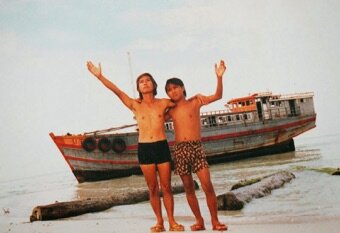
Otherwise, he would have been executed. The new government no longer allowed me to train in chess. The only thing they allowed me to do was to defend my National Championship, which I did successfully until April 30, 1979, the fourth anniversary of the fall of Saigon. On that day, my father and I escaped by boat through an underground network, leaving my mother and young brother behind. They would never survive this dangerous escape. Our hope was to be able to get out first and bring them out later through another channel. To make the long story short, we faced death many times. How we survived was a miracle in itself.
SP: So what exactly happened?
PT: We had a lot of problems the first time we tried to escape. The wooden boat was only about 150 feet long and there were more than 600 people inside. We were sitting like sardines in a can, even worse. There was no ventilation, no food, no water and not even a bathroom. The engine could not hold up and exploded. We were stranded in the ocean without food and water for a while.
After we were lucky enough to be rescued, our boat was towed back to Vietnam and we were all thrown in jail. Luckily, the authorities did not know who my father was. After bribing the local officials, we were released and we escaped again.
This time, the engine was bigger. But we had different problems. We were attacked by pirates from Thailand. They took the valuables from people on the boat. They raped our women and young girls. They even took some to their boat when they were done. We never saw these young girls again. We had to go through this five different times with five different pirate ships.
SP: So how did you get to safety?
PT: During the fifth attack, the pirates could not find any valuables because the previous four groups took everything. They were angry so they sunk our boat. We were in the middle of nowhere in shark infested waters. Many people could not swim and drowned. Other died of exhaustion. And some died from you know…
SP: You mean from shark attacks?
PT: Unfortunately, yes. My father and I were lucky enough to live through this. An American oil tanker happened to go by, saw us and rescued us. We then were brought to Malaysia.
SP: So you were safe after this?
PT: No. After being in a small enclosed abandoned soccer field with no roof over our head, little food and unbearable living conditions for 30 days, we were thrown out of Malaysia because the locals could no longer to help us. They put us on a boat taken from previous refugees, threw in another 350+ refugees from different boats (now we had about 700 people total), gave us 20 gallons of fuel and 20 gallons of water (no food), then towed us out to international waters.
Could you imagine, 20 gallons of fuel? Where do you go with 20 gallons? And 20 gallons of water for 700 people? How long can anyone last under 120-degree heat directly under the tropical sun with no food or water? Not only that, while the towed us out, they purposely tried to sink us. They towed us in a zigzag formation to tear apart the front of the boat. They did but we were lucky that the boat did not break in half. After they got us to the point where they thought we could never survive, they left us to die.
Again, we had to drift to nowhere for weeks without food, water or fuel. Many people died of hunger and thirst. Dead bodies were everywhere. There was nothing you could do. All you could do was pray.
SP: How did you manage to survive?
PT: I guess my father and I survived because of our inner strength. We said to ourselves, we have to live. We have to make it because if we don’t, my younger brother and mother would die eventually die in Vietnam. They had no way of taking care of themselves. The communists did not treat them well after learning of the escape of my father and me. They punished them. They took away everything they owned. So we had to be strong and make it. We had no choice…. [Paused, tears welling up]
I am sorry. This is a very emotional topic for me. It brings back a part of me that caused me great pain.
SP: That is OK. I know you for nearly 30 years (since the mid 80's) now. I know you usually don’t want to talk about it. But I think this is really important for chess fans around the country and around the world to know why you are so passionate about helping chess. I think it is very inspirational. Please go on. How did you survive?
PT: We were drifting nowhere for a long time. All of sudden, after weeks of nothing but ocean, we finally saw land at the end of the horizon.
SP: So that was it?
PT: Not exactly! We could not get there because we had no fuel. And it was too long of a distance to swim. No one would make it. But luckily, I don’t know how, but the current apparently pushed us slowly closer. Then out of nowhere, Indonesian navy ships came in front of us to stop us from entering.
My father was brought to the commanding ship. They told my father to turn our boat around. My father explained to them we could not. We had no fuel, no food, no water and many of our people had died. They said they had order not to let us in. If we do, they have no choice but to shoot us down. My father told them in that case then please just save all of us from a slow and eventual death by shooting all of us now. We would not make it anyway.
Upon returning to our boat, my father ordered everyone to throw overboard all the dead bodies that relatives were still trying to hold on to for a proper burial. This was our only hope to show them how bad the situation was. When the captain of the commanding ship saw how many bodies were there, I think he changed his mind. An hour later, an official helicopter circled around us and they officially requested to have us brought to safety. In my heart, I know that the captain had radioed for help. But he would never admit it.
SP: So this was the end of the journey?
PT: Kind of! After we were brought to this wild and deserted island, we were safe. But we still had no food. I had to hunt and fish with my bare hands, and find fruits from the jungle. We had to do whatever we could to survive. This was a real survival experience, not the game you see on TV. Many more people died as a result of malnutrition. We stayed here for about 5-6 months I think. Then finally, we came to New Jersey on December 1, 1979. I spoke no English. I was frail. I was very rusty in chess. It was a disaster.
SP: So did you start to play a lot chess in here in America? And did anyone know what you had to endure?
PT: I played in any tournament that I can afford to enter. I had no money. I was going to high school full time (without even knowing the language) and I worked seven part-time jobs at night and weekends to raise money to send back to Vietnam to help my mother, my brother and over 60 other relatives. Most people did not know this. Some knew, but very little. I did not want anyone to feel sorry for me. I wanted to earn everything by merit. I became a master again in 1980. I was right around 15. I won many tournaments, but I could not afford to enter many big tournaments, so mostly regional ones.
SP: So when did you leave chess?
PT: At the age of 17, I had to make a very hard decision. Do I want to continue to play chess and be a professional, and to fulfill my dream of being a grandmaster and even world champion? Or do I just give it up and go to college and have a normal career? I chose to leave the game. How could I be a world class player if I did not even have the opportunity to train or play?
So I went to college. And during college, I did the same thing. I had 7 part-time jobs while taking over 21 credits per semester. I also took winter courses, summer courses. I needed to graduate as quickly as possible.
SP: So what happened after college?
PT: I began working professionally. I worked very hard. I put in 16-18 hour days, seven days a week. I became very successful. I did that every day for 15 years. Then in 2001, on 9/11, you remember we had a business meeting right around the World Trade Center area that morning. I guess someone up there did not want us to go. That was when I felt that it was my calling to do something I always wanted to do, and that is to get back in the chess field. That was always my true love.
SP: Is this why making a difference for chess is so important to you?
PT: Yes. Absolutely. I lost my chance to become a very special player in chess when I was younger because of the political situation in my country. I wanted to become the first grandmaster from Asia. But I did not have this chance. Then when I was in America, I could not pursue chess fully because I could not afford it. That is why it is my mission to change this. I want to be able to give every child an opportunity to play this game. I want every child who wants to pursue his or her dream will have the proper guidance and assistance.
I know that I may not reach every child. But I will give it 150% everyday to fulfill this mission. I want to bring respectability to chess. I want to bring chess to the same level as golf or tennis. Why not? Who says we can’t do it? If I can survive everything I went through in life, why can’t I do this? I don’t know failure. I don’t accept failures. I don’t understand the word ‘impossible’. I did not risk my life, give up everything to come here to just be another person. I want to make a difference. I want to give back for the blessing I had.
SP: Is this where you get your passion?
PT: Yes! Whatever I do, I give 150% of myself. Everything I do, I do with a passion. Everything I say, I say it with a passion. This is me. Even now when I am retired from business, I still put in 20-22 hour days, for chess, for free. I sleep very little. I hope my passion will rub off on other people. I hope that when more people see why I am doing this, they will join and lend a hand. There are 40-45 million people who play this game according to the numbers I read. Why can’t chess be bigger and more popular? I will not take no for an answer. I am confident. Let me rephrase that. I am absolutely positive that we will succeed if everyone works together.
SP: How do you plan to reach out to every child around the country? That is quite a job and quite a goal.
PT: You are right. It is not possible for you or I to go to every school or city in America. But thank God we are living in the 21st century with internet technology. We can reach out and help every child this way. Recently, I contacted Mr. Niro and a few people I know who are in the internet chess industry. They agreed to help me achieve this goal. As you already know, we have to start with the kids and we need the support from parents and coaches. So starting next month, and by the way, before I go into this, I want to thank you for doing this with me. You are a true ambassador for this game and you are truly a role model to children and women. You are really an inspiration to me as well.
Thank you for working with me in these very worthwhile projects.
As I was saying, starting in September, we are (you and I) going to have a monthly Q&A session with all parents and coaches who need or want advice on how to help their children, their schools, their communities, etc. Parents and coaches can send us questions and they will get a chance to get the answers they need on the Internet. It will be done live and FREE for everyone. On top of that, we are also conducting special training for youth and scholastic players. All children will benefit tremendously from your experience and wisdom. I am thankful to have the cooperation and assistance from USCF and your Susan Polgar Foundation. We hope this will help hundreds of thousands (maybe even millions) of children out there. Everyone is welcome and it is free. All they have to do is find out the details from your website www.susanpolgar.com. The info will be available soon. I am really excited about this. (Since then, the Susan Polgar Foundation, through our partners and sponsors, has awarded for more than $3.5 million in chess scholarships)
SP: How did this idea come about?
PT: When you and I attended all these different national scholastic events, so many parents and coaches came up to us to ask for advice. That was when I started thinking, how can we help more parents and coaches? Then the idea of doing through the Internet came to my mind. This way, we can reach out to everyone 24/7.
SP: I can understand your passion for youth and scholastic chess. Where did the passion for women’s chess come from?
PT: I think the answer is obvious.
A – My best friend for almost two decades is one of the greatest women’s world champion ever.
B - Being part of a minority group, I want to help the underdog. Just like you, I believe that many young girls can benefit from chess. It can help them raise self-esteem and confidence. With your experience, we can really make a difference. That is why a program like the US Women’s Olympiad program is so important to me. It can change chess, as we know it, forever.
I am so thankful for people like you, Garry Kasparov, Frank Niro, the Chess Trust, etc. for lending a hand, believing in this. I think by now, everyone realize that we do not do this for money since there is no money (chuckle). In fact, it is costing us a lot of money (smile). But it is worth it. It is truly worth it.
SP: Paul, I really appreciate you doing this. I know that for 30 something years in America, you tried not to talk about your traumatic life experience. I realize that it is very emotional and difficult for you. But I think your story can inspire a lot of people. One last question?
PT: Sure.
SP: Have you thought about putting your inspirational life story into a book, maybe even a movie? I know that there are a lot more incredible details (including an episode where you had a gun pointed right at your head and you refused to back down to the Communists, you would rather die for what you believe in) that you did not want to go into. Your story can rank up there with the Anne Frank story and many other WW/Holocaust stories.
PT: I would like to but I don’t know how to go about and do that. Maybe someone can help me. But if and when it happens, I would like to use the money from book sales or movie deal to help chess. I will only do it for a meaning, not just to make money for myself. I have done that for 15 years already. I don’t need it. But I will do it to help women and children. I will only re-live this painful part of my life if it can benefit millions of children and women.
SP: Once again, thank you Paul for sharing part of your life with us. As one of your best friend for almost 20 years, all I can say is that you are such an inspiration for many, including me. I have no doubt as well that you, me, us, we will succeed in making a difference in chess.
The following is a quote from Garry Kasparov about the US Women’s Olympiad Program, where Paul was the Captain, Business Manager and even helping out with the training duties.
World Champion Garry Kasparov: "What I've seen in this team is quite unique in today's world of chess" - it goes to your (Paul) part of the team's chemistry and respect in the team's members' relations.”
Is it Time to Kill College Sports?
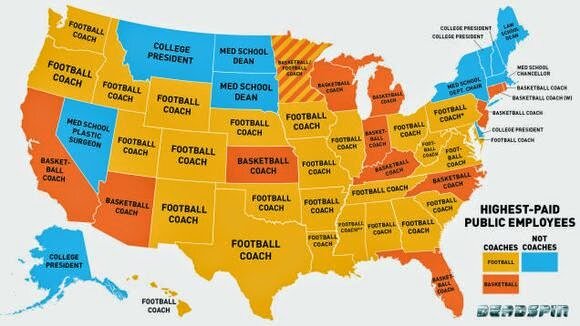
By John Mitchell
May 17, 2014
Did you know that in your state the highest paid public official is probably a college football or basketball coach? If there is any doubt to how far off track American higher education has wandered from its mission, Infographics spelled it out in a chart that even a University of North Carolina jock can figure out.
In 2011 this growing trend prompted Forbes contributor Steven Salzberg to sound the alarm when he wrote: "The culture of football in American universities is completely out of control…. If we keep it up, the U.S. will eventually be little more than the big, dumb jock on the world stage."
Follow the money: The culprit to this college mission creep is television money. Last year a South Carolina football coach, in response to a proposed nine-game conference football schedule, made the rather candid pronouncement that, "Anything can happen when television starts telling you what to do."
In his world, the NCAA negotiates $10 billion deals for football and basketball broadcast rights. In the most recent March Madness tournament, it was reported that CBS (NYSE: CBS ) and Time Warner's (NYSE: TWX ) Turner Broadcasting made more than $1 billion in ad revenue off the games.
It's no wonder that many universities and colleges have convinced themselves, with the urging of well-heeled alumni, that it really is necessary to pay the football coach at Alabama $5.5 million and the basketball coach at Duke almost $8 million. In fact on the list of Top 50 Highest Paid Basketball and Football Coaches, the lowest pay is a paltry $1.8 million. This truly is madness, except it's year round, not just in March.
So what is American higher education getting in return for this expensive hero worship?
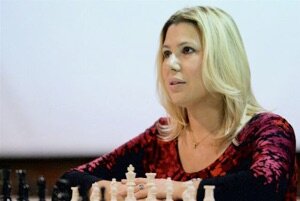
"For the first time in the almost 100 history of our university, we are a national champion," said Webster provost Julia Schuster. Schuster said the "there is no doubt" the distinction will be good publicity for the university, which operates 100 satellite campuses around the world, where the value of sports in higher education is viewed with puzzlement. After all, it's easier to make a case for the logistics of chess as promoting a college's mission.
American academic genius and chess phenom

BY NOAH DAVIS • March 19, 2014 • 10:00 AM
Luke Vellotti is going to rule the world.
This is the partial text of an email I received while trying to schedule an interview with University of California-Los Angeles freshman Luke Vellotti: “I am taking 23 credits, so there is always homework or a test to study for. I also train the chess team, and I am the treasurer of the Stamps Scholars Society (which gave me my merit scholarship to study here at UCLA), and I am a member of Engineers Without Borders with a project to work on.”
Luke Velloti is an international chess master (one step below grandmaster), a three-time national champion, and a double major in math and computer science. He wants to be a doctor.
Luke Vellotti is 14 years old.
Was there a time where you remember not being one of the smartest people in the room?
I don’t think so. I went to a gifted school, and I was the youngest student ever to enroll in it. I was the only kindergartner. When I was in elementary school, I was always separated from the other students in math.
Have things always come easily to you in an academic setting?
Math and science aren’t that hard for me. I struggle with English. For chess, I’ve studied so much. I started playing when I was four, and I’ve studied probably for at least two hours a day every day since then. It’s a lot of hard work.
What do you find difficult about English?
I actually have an English paper due today. It’s hard for me to come up with ideas. I don’t know why. It’s just not my thing.
But you’re still pursuing it and still trying to improve?
I want to be good at as many things as I can. I have to work very hard with English to try to make my papers good and to be a good writer.
Is UCLA hard for you?
The classes are hard. I’m taking two math classes that are honors classes. There are only 20 students in them as opposed to 300 in the normal class, so it’s a lot harder. I like that because I’m with the smartest people here. I’m taking physics—that’s pretty hard but not too bad. The computer science isn’t too bad. I’m also taking some online classes. I’m able to take more classes than I was in Boise, and I can go as fast as I want. That’s why I wanted to leave Boise at a young age. If I had stayed in Idaho for four more years as a normal student, I would have had to take art classes, which I don’t really enjoy. I wanted to come here because I knew I could take the classes that I would enjoy the most.
You’re majoring in math and computer science. Will you specialize in those as you get further along toward your degree?
The only reason I’m taking English is because it’s a requirement. I’ll probably specialize. I’ll take some biology classes, too, because I want to go to medical school. Math and computer science, especially computer science, have become much more common in medicine these days with things like medical imaging.
I don’t want to become a professional chess player. I think I might be able to be one of the strongest chess players in the world, but I don’t feel like I’m actually helping humanity by doing that. I feel like I could help people a lot more than by becoming a chess player.
How far do you want to take the chess? You can only divide and conquer for so long.
I want to become a chess grandmaster. Right now, I’m an international master, which is one step below grandmaster. After I become a grandmaster, I’ll probably continue to play but not that much. In September, I’m going to go to the World Youth Chess Championships in Durban, South Africa. I’ll be playing in the under-16 section. My goal is to study enough for that to be able to win. I have never been able to go before because it has always been during the school year and it’s three weeks long. It’s really hard to miss three weeks of school. But UCLA starts in October this upcoming year, so I should be able to make it.
You keep really busy. Do you get bored easily?
If I’m not doing something, then I do get bored. I like to keep busy. Whenever I was done with schoolwork, I would study chess. I feel like I can learn a lot of things, so I think I should learn as many things as I can. Before I went to college, a lot of my teachers said I would figure out something that no one has ever figured out before. I don’t know what that is yet, but I want to learn a lot of things to know what that’s going to be.
Is that a goal?
Yeah. To figure out something no one ever has.
Your family has been really supportive, moving out to Los Angeles when you went to school. And your brother is a freshman as well.
My mom lives with us. We live in an apartment a little south of UCLA. My parents have been extremely helpful. My dad was the one who taught me chess initially. He started teaching me when I was four. It would seem like it would be hard to get a four-year-old into chess, but my dad was able to make it really fun for me. We’d play games like Monopoly chess, or I’d solve a chess puzzle and then we’d play a round of Monopoly. We did a lot of adventure stories. He’s continued to help me throughout my entire chess career, although now I’m better than him—but he’s proud of me. My mom doesn’t play that much chess, but she’s really supportive.
It’s really nice having my brother here at UCLA. It would be hard without him here. It’s good to have him here. We are really close.
How would it be hard without him?
He’s a lot more sociable than me. He has a lot of friends. He introduces me to them. I don’t know if I’d be able to do it without him. Sometimes we help each other with homework. Last quarter, we were taking a chemistry class together. We were always helping each other.
It sounds like he’s a pretty smart guy as well.
He’s a bioengineer at UCLA. He’s the normal age, but he’s still really smart. He’s the reason I was able to go to college so early. When he was in fifth grade, he took a test to get into a special school. The next year, my parents decided that I should take the test as well. I got in as a third grader, but a lot of the classes I was taking were really hard for me. He was really helpful. He’s a great brother.
Are there any subjects that intimidate you?
I’ve been able to master pretty much everything that’s been put before me in the past. If I work at something for long enough, eventually I’ll get good at it. I’ve never been that intimidated by anything; I just want to learn as much as possible.
Have you failed at anything academically?
I don’t think so. The worst I’ve ever done on a test was a math competition. There was an introductory round and then the top five percent in the nation went on to take another test. They took the top five percent of that test, and gave us another, extremely hard test. You got nine hours for six questions. I didn’t do very well on that. I wouldn’t say I failed because I still made it to that point, but it was the worst I’ve ever done. Out of the 42 points on that test, I only got one. I still beat 30 people out of the 200 people who were taking it.
JZ: And you think society tells kids that they should do something different for fun?
Carlsen: Yeah. In my experience, when I went to school, and especially in after-school, and during breaks, a lot of people wanted to sit down and play chess up till a certain age when it was not supposed to be cool anymore and people wanted to do other things. Kids love games and chess is a game where you have to sit down and concentrate and it just helps in every way.
<extracts> Read the full article here
http://theclassical.org/articles/the-boy-king-an-interview-with-magnus-carlsen
New World Chess Champion for the Disabled
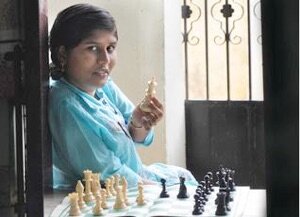
New Delhi | Jul 24, 2013
India's K Jennitha Anto has became the World Chess Champion for disabled after winning the 13th IPCA World Women's Individual Chess Championship in Velke Losiny, Czech Republic.
Hailing from Tamil Nadu, Jennitha scored 4.5 points in nine games after winning three, drawing three and losing three games.
She competed in a combined group with men and became the highest scorer among the women players and was awarded the IPCA Women's Chess Title.
Two Russian women were tied with Jennitha on points but the higher buchcholz score helped Jennitha win the title.
The title came along with the Woman International Master title. The new WIM title would allow her direct entry to many of the National events for women except the premier.
The event attracted 49 physically challenged players of fifteen countries.
Jennitha being a wheel chair player participated in Fide A category and almost all the players are international rated players. Nearly nine title holders participated in this championship, five IMs, one FM, one WFM and Two WCM’s. More than 25 wheel chair players participated.
Polgar and Truong at the FIDE World Cup 2013

One of the most successful chess Olympic players of all time, a five-time Olympic Champion with 10 overall medals (5 gold, 4 silver and 1 bronze), Susan Polgar has been appointed by the organizers as Head of the press centre during the FIDE World Cup 2013. Paul Truong has been appointed deputy head.
Consequently, Susan Polgar will be responsible for working with the international chess media, holding the press conferences and be the liaison between the players and the media during the FIDE World Cup 2013, to be held in Tromsø from August 10 to September 3, 2013.
She will also work as a commentator during the first four rounds of the championship.
Award-winning and best-selling chess author, journalist and promoter Paul Truong has been appointed deputy head of the press centre. He will also work as a writer and photographer during the championship and act as a substitute for Polgar.
"As organizers of the FIDE World Cup in 2013, we are very satisfied to be able to work with Susan and Paul," says Head of Communications and PR for the organizers of the Chess Olympiad 2014, Jarle Heitmann. "For us it is reassuring to know that we have appointed two highly experienced international chess authorities to be responsible for our press centre. This will ensure the quality of this work."
Official website: http://www.chessworldcup2013.com


